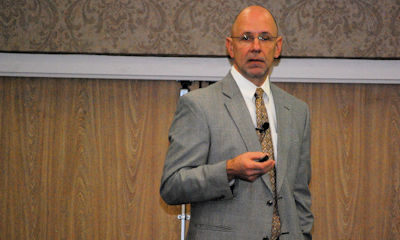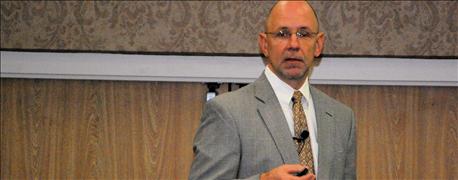
“People often confuse the aging land owner with some other structural change in agriculture that’s not actually taking place,” says Bruce Sherrick, University of Illinois, professor of agricultural and applied finance, and long-time farmdoc contributor. “People keep saying operators are getting older, so a lot of land is going to come to market soon. But there’s little evidence the aging population has much direct influence on turnover rates. Instead, it is more important to understand other fundamental changes that influence farmland markets including sales prices and turnover rates. ”

CASH RENT ACCURACY: “I can estimate a more accurate rental rate if I better understand productivity potential,” says U of I's Bruce Sherrick.
So if farmland isn’t popping up with ‘for sale’ signs at an increased rate, what’s happening? Sherrick explains there’s a continuing shift towards cash rent and owners and operators being different people. Meaning landlords who are further and further removed from the farm.
Granular, a farm management software company, recognized this shift and set out to build tools that give farmers and landlords faster and easier access to specific land data. “AcreValue is a land valuation and soil map productivity tool,” says Landon Frye, Granular. “It performs like the Zillow.com of agriculture.”
AcreValue also shows real-time valuation on every single tract of land in Iowa, Illinois, Indiana and Minnesota. Frye says farmers can log on, zoom in and see land values as of today and over time. “Farmers can download a full valuation analysis for each field for asset management and record keeping,” Frye notes. The printable page includes soil maps and productivity data. “It’s become an interesting tool for the market,” Frye explains. “It’s very transparent and easy to access information in a consistent and uniform manner.”
Related: Land values likely to decline in 2016
How accurate is the data? Frye says AcreValue came within a dollar on 600 acres sold at a land auction in Champaign County. “We have enough information in the model to calculate a very close range for value,” Frye says.
Sherrick explains that kind of access to accurate information is just one example of how farmland markets are becoming more sophisticated. “We don’t have to go find a county courthouse and sign releases to get a file out of a steel drawer anymore,” Sherrick says. Today, you can layer in soil, weather and historic production records over one parcel of land making decisions much more accurate.
“Instead of asking ‘Is that a $300 or $400/acre parcel?’ I can estimate a more accurate rental rate if I better understand its productivity potential,” Sherrick explains. And it’s not just price. It’s looking at a parcel of land and thinking about planting rates, seed treatments and traits based on soil maps and production history. “Those are conversations we didn’t have 15 years ago,” Sherrick says.
Related: Illinois farmland vales, rent trends continue downard
Sherrick believes that farmers who become agile with new data systems, like AcreValue, will have a significant advantage as renting farmland becomes more refined.
About the Author(s)
You May Also Like




